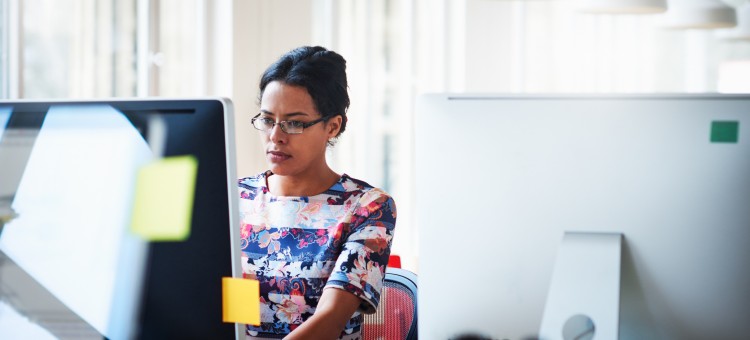Work Life Post-Pandemic
9 Min. Read
 Credit: iStock.com by 10'000 Hours
Credit: iStock.com by 10'000 Hours

By Frederick Lamster and Sharon Tunstall
Thoughts on a New Reality and Hopefully a Return to Some Form of Happiness
Over the last two years, our articles have primarily addressed the challenges that face the current and future workplace. That being said, it's the pandemic that has most challenged our views and “rules” on the set-up of the workplace and established routines. While things were changing prior to the pandemic, the pace of change is what was startling.
We've shared our thoughts about remote working, the challenges of managing and leading in an environment driven by Zoom calls, and leadership in a changing work environment. Now that many of us are inching back into some type of “organized work environment,” in this article we offer some thoughts about what we believe the new reality will be and the challenges facing us as managers, leaders and co-workers.
Zoom is Here to Stay
There are some businesses dictating a full return to the office; however, except for those industries that depend on actual physical presence (e.g., medical, first responders, manufacturing, supply chain), most organizations are finding that more flexible work schedules and work styles are going to be the norm rather than the exception. This isn't really a new trend nor is it in any sense a negative. What's the right balance?
At Empower, as we hear from colleagues in other businesses, productivity actually improved during the work-from-home/pandemic months. It wasn’t workload that was affected as much as relationships and the ability to share impromptu ideas and thoughts while passing in a hallway or talking at the coffee machine. These more informal, unplanned discussions clearly led to creative thinking and innovative ideas. At Empower, we continued to be effective at our tasks and working on planning and buying space for ads, but were we thinking of more creative ways to deliver our plans and buys? The same can be said for almost any collaborative industry.
All of us who have sporadically visited the office over the past 18 months notice the laughter that we don’t get when working at home and alone. We find that human interaction and in-person meetings can consume significant amounts of time and often can seem wasteful. For those who now have developed a hybrid work model, we often claim that we have to return to our home offices to get the work done and to return to seemingly enhanced levels of productivity. And while it's true that in a world of fewer distractions we seem to better manage our time, in-person activities can lead to unexpected and often positive uses of time.
While seeming interruptions can interfere with planned work activities such as creating a deck or authoring a POV, that's only one side of the story. It's the richness of personal interactions that's most often lacking and is increasingly recognized to be an important part of the overall work experience. Now that we're several cycles into the pandemic, we need to take time to reflect upon the positive and negative consequences of this “new normal.” What's the impact on the individual of working at home, much of that time spent in isolation?
Zoom and other technologies have enabled the Western world to continue to function effectively (if not more efficiently) in an extremely challenging time. Even though we've been largely isolated, most societies and economies have actually done pretty well over the past year and a half, especially once the world began to understand the scope and breadth of the internet and once companies moved quickly to service customer needs while most of us hunkered down at home and rarely left the house.
Some industries have actually flourished. Have you tried to buy lumber lately or have you ordered build-it-yourself kits? P&G and Kimberly-Clarke revenues rose due to exaggerated need for toilet tissue and paper towels. What about those companies that produce bleach and bleach-enhanced products? For them 2020 and 2021 have been banner years for sales and profit. However, these are not sustainable trends unless there's a greater level of innovation that creates a greater level of need by the consumer. Companies and industries must now figure out how to meet demand and provide services on the other side of this pandemic that mirrors the levels of growth experienced in specific sectors. We're not suggesting that we're totally post-pandemic, but that due to science and medicine we're quickly returning to some sense of normal, whatever that may turn out to be.
To reiterate, we believe that technologies like Zoom, Microsoft Teams and other enhanced communication “vehicles” are part of the new work life going forward. However, total reliance on these technical advancements isn't going to aid in developing a healthy and balanced work environment with a retainable workforce.
Collective Effervescence
Recently there was a very interesting piece in The New York Times Week in Review section titled, “There's a Specific Kind of Joy We've Been Missing.” The author, Dr. Adam Grant, discusses the power of collective interactions. His key observations:
Research has found that people laugh five times as often when they’re with others than when they’re alone.
We find our greatest bliss in moments of collective effervescence.
It’s a concept coined in the early 20th Century by the pioneering socialist Emile Durkheim to describe the sense of energy
and harmony people feel when they come together in a group around a shared purpose.
Grant goes onto to posit that lockdowns and social distancing create greater levels of isolation and fewer opportunities for the collective effervescence moments. Many describe it as feeling as if we were under a dark cloud. Those less inclined to high levels of social interaction initially believed this period of isolation was a bonus as they didn’t need people to be fulfilled and rather enjoyed this new stay-at-home environment. However, at the height of the pandemic, when we all remained inside, seeing few others and using Zoom as our preferred method of social interaction, it didn't take long for both introverts as well as extroverts to talk of a more universal sense of depression, anxiety, stress and loneliness.
“Extroverts may seek more connection, but introverts need it as well — they, too, are energized by social interaction. In isolation many introverts may have been surprised to feel forlorn. They were missing collective effervescence.”
Finally, Grant shares that psychologists “find that in cultures where people pursue happiness individually, they may actually become lonelier. But in cultures where they pursue happiness socially — through connecting, caring and contributing — people appear to be more likely to gain well-being.”
We all, perhaps to varying degrees, feed off some form and level of social interaction. Going forward, the challenge for all businesses will be to provide workplace environments with a correct (and flexible) mix of in-person and more solitary situations.
The New Normal
Throughout our articles, there has been a consistent theme around the shift to “The New Normal.” Exactly what that new normal end state will be is still to be determined, but it's clear that the workplace is changing as expectations and associate work/life balance ideas shift and evolve. There's no perfect answer for what the ultimate or ideal office environment will be in that end state. The next major challenge will be what the return-to-the-office schedule will be and what the ensuing office environment will look like.
There have been a proliferation of articles analyzing the past 18 months, predicting what the future of work environments will be, examining the effects of isolation vs. collective interactions on mental health and others in the same vein. When we retreated to our homes and began to depend on Zoom in March 2020, we had no idea that the rest of the year would be one in which we were isolated, alone and forced to develop “new” work habits and mechanisms. The next 18 months will also be unchartered territory as we navigate and discover the correct balance in our personal and work environments.
What we do suggest, however, is that extremes won't be the best course. Companies rushing to offer a total remote working opportunity where individuals or full functions are employed by those in other geographic locations may regret their move for a number of reasons. What will the impact of a total remote environment mean to company culture? To retention based on the loss of one-on-one connections? On stability based on the ability of leaders who have grown up one way suddenly shifting to manage in a completely different fashion? What should the long-term reality be for a company? How do we rethink the work environment while retaining productivity and stability? None of these are easy questions with easy solutions.
In the past, we've written about the challenges of baby boomers (highly social) and millennials, Gen X, Gen Z, etc., (technically oriented with different “social” behaviors) interacting with each other. We've argued in previous works that these different generations can, in fact, function quite successfully in co-work environments and where the mix of skills and work perspectives may bring about a new level of productivity and creativity.
However, all of this assumes some level of physical presence and social interaction. We appreciate that during the last 18 months many found that losing long commutes made a positive impact on the work day; casual clothes (sometimes too casual) are easier and cheaper; spending all day with one’s pet is a nice perk; and all of this occurs while continuing to get work done and feeling productive. We argue that the reality, especially in collaborative or cross-functional and client-facing organizations, cannot move to a seemingly “isolationist” approach. While productive in the short term, this may not be as sustainable in the long run as people believe. There needs to be a healthy mix of in-person interaction with the benefits of remote working. It's some hybrid or mix of the two that will work best, but who really understands what that means? The risk vs. return ratio isn't defined, researched, understood or predictable. Exactly where do we go from here?
Sharon Tunstall is chief human resources officer at Empower Media Agency, an advertising and marketing agency.
This article originally appeared in TotalRetail.

